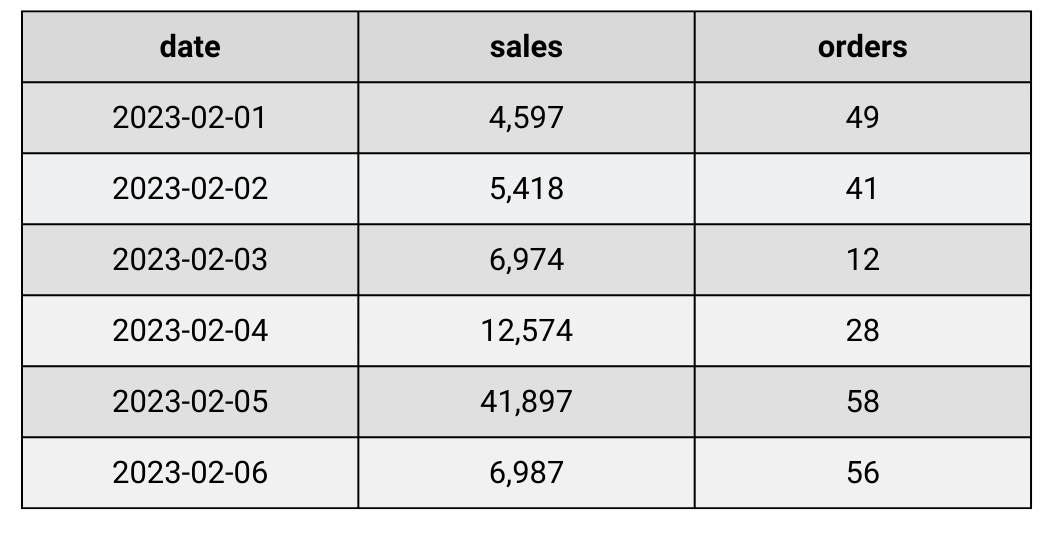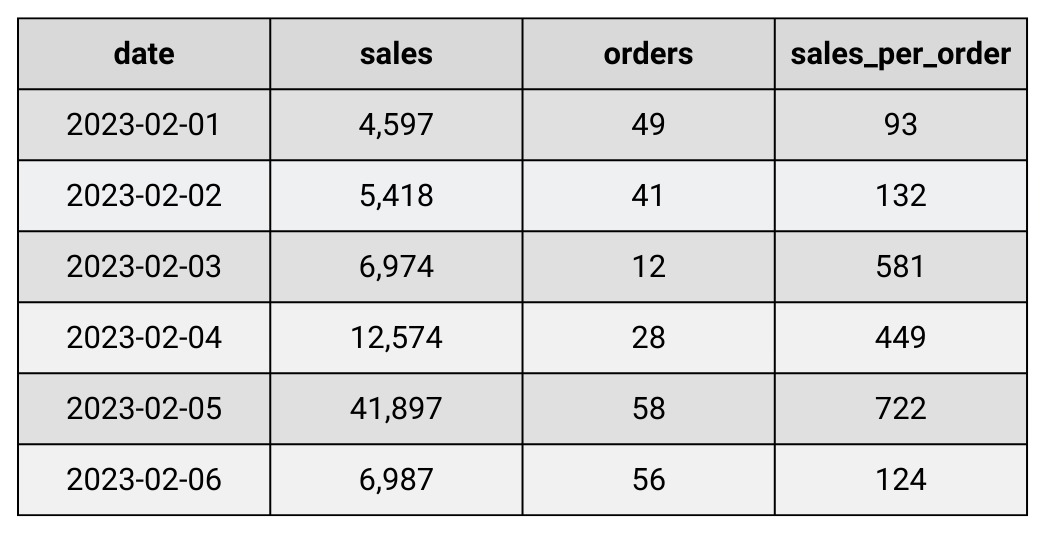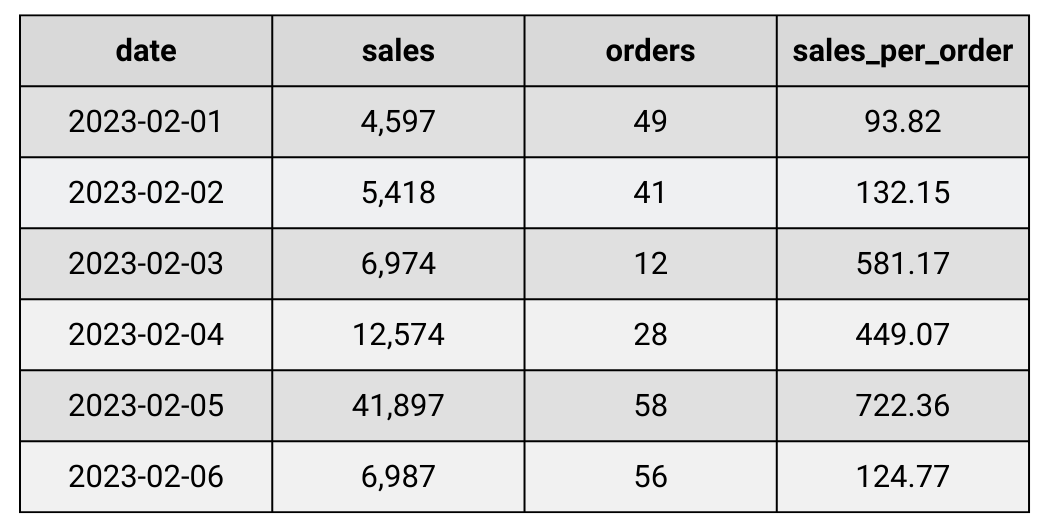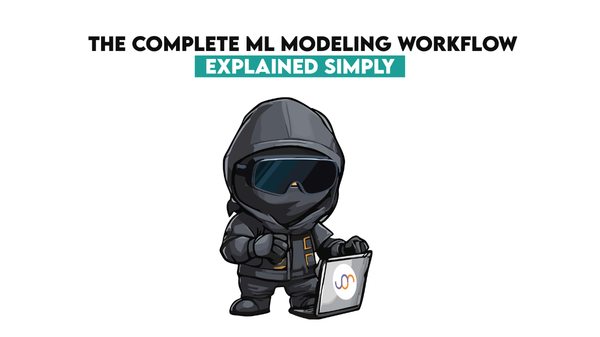Top Most Common SQL Coding Errors in Data Science

Categories:
 Written by:
Written by:Nathan Rosidi
Let's look at some common SQL coding errors that data science beginners usually make. We will look at the concepts and hands-on practice using real examples.
Fail fast, make mistakes, and learn quickly but never repeat the same error. As data science beginners, you are probably excited to start working with SQL. But, there are some common SQL coding errors that we have identified many beginners make on our platform.
We will look at some of these mistakes along with an example from the StrataScratch platform where available so that you never repeat the same mistakes again.
At StrataScratch, we have over 1000 coding questions on SQL and Python, with thousands of users solving these questions monthly. Due to such a strong community of users, many different approaches are available to solve each question. We have analyzed some of the solutions that our users posted and identified patterns in the common coding errors you guys make.
This article will be helpful for people starting in the field of data science and who have begun coding recently. This will cover things you should avoid when writing your SQL query and some of the best practices to follow. Before moving into the topic right away, let’s quickly see what the order of execution is for a generic SQL query.
Order of Execution of SQL Query
It is critical to understand the order of execution of your SQL query. This will help you write better/efficient queries while avoiding syntactic or semantic errors. The order must be in the format below, or your code will have errors.
- Get the data (This can be FROM one table or from 2 tables when JOIN executes)
- Filter the data (the WHERE clause is executed when the data is available)
- Grouping (When using aggregation, GROUP BY is executed after filtering the data)
- HAVING clause
- SELECT statements
- ORDER BY
Once you understand the above order of execution, you can avoid making some typical SQL errors in your code. Now let’s focus on some of the most common SQL coding errors beginner data science folks commit.
Most Common SQL Coding Errors
SQL Coding Error #1: Use of Reserved Keywords
Reserved keywords are SQL keywords that should not be used when writing your SQL query. These keywords have special meanings in the relational engine. For example, MAX is a reserved keyword in SQL used to compute the maximum value. ORDER is a keyword used to sort the data using the ORDER BY clause. When used in the query, such keywords throw an error if not handled correctly.
Example from StrataScratch:
Last Updated: November 2020
Meta/Facebook Messenger stores the number of messages between users in a table named 'fb_messages'. In this table 'user1' is the sender, 'user2' is the receiver, and 'msg_count' is the number of messages exchanged between them. Find the top 10 most active users on Meta/Facebook Messenger by counting their total number of messages sent and received. Your solution should output usernames and the count of the total messages they sent or received
Link: https://platform.stratascratch.com/coding/10295-most-active-users-on-messenger
If you look at the dataset closely, you can see there are id, date, user1, user2, and msg_count columns. While working on this question, we observed that a lot of beginners make a similar coding error of using the SQL keyword “user” in the query.
Code With Error
SELECT id,
user1 user
FROM fb_messages;
In the above example, the candidate is trying to select the ID and the user_1 field from the table but using user as an alias. User is a keyword in SQL and can’t be used like that. To avoid this error, we can use the below query.
Code Without Error
SELECT id,
user1 AS user
FROM fb_messages;
In the above query, we have used the AS keyword to give an alias to the column user1. Thus, we need to use AS and can’t have any shortcuts when using SQL keywords.
Run the query to see if you get the same output.
The reserved keywords should ideally be avoided in your queries, so instead of using the user as the name of the column, we can change it to username as in the below query.
SELECT id,
user1 AS username
FROM fb_messages;
Thus, if you want to use the reserved keywords as aliases, you must use AS for giving alias, and there shouldn’t be any shortcuts.
SQL Coding Error #2: Column as Reserved Keyword

This is a problem similar to the previous one. This SQL coding error occurs when the column in the table is named as the reserved keyword.
Suppose you have a table named it_problems. It’s a list of IT problems categorized as internal or external.

Code With Error
If you wanted to count the number of problems by the problem type (Internal/External), you would write this code.
SELECT int,
COUNT(id) AS problem_count
FROM it_problems
GROUP BY int;In MySQL, this would return an error. However, the query runs without the problem in PostgreSQL and returns this output.

Code Without Error
There are two ways of avoiding this problem. Except renaming the column in the database, that is.
You could use backticks the following way.
SELECT `int`,
COUNT(id) AS problem_count
FROM it_problems
GROUP BY `int`;Or you could name the table before the reserved keyword column name.
SELECT it_problems.int,
COUNT(id) AS problem_count
FROM it_problems
GROUP BY it_problems.int;Both ways would work in MySQL.
Each DB has different reserved keywords; you can find those in the documentation.
- Postgre https://www.postgresql.org/docs/current/sql-keywords-appendix.html
- MySQL https://dev.mysql.com/doc/refman/8.0/en/keywords.html
- MS SQL Server https://learn.microsoft.com/en-us/sql/t-sql/language-elements/reserved-keywords-transact-sql?view=sql-server-ver16
SQL Coding Error #3: Data De-Duplication
From the vast amount of solutions we have on our platform, we identified one of the most common SQL coding errors while using a DISTINCT keyword in SQL queries.
Some questions usually ask to output a user or a product based on a certain condition where a user/product might appear in multiple rows. Many users do not use the DISTINCT keyword in the query, which results in duplicated user/product in the output. An example is shown below:
Last Updated: December 2020
Identify returning active users by finding users who made a second purchase within 1 to 7 days after their first purchase. Ignore same-day purchases. Output a list of these user_ids.
Link: https://platform.stratascratch.com/coding/10322-finding-user-purchases
From the above question, let’s imagine you need to find the user IDs that either buy milk or bread or both and output the user IDs in ascending order.
Code With Error (Semantic - Duplication in the Data)
SELECT user_id
FROM amazon_transactions
WHERE item IN ('milk','bread')
ORDER BY user_id;From the above query, the output of the code will have repeated user IDs since one user might have bought both milk and bread. Thus, in order to de-duplicate the data, we need to use the DISTINCT keyword, as in the below example.
Code Without Error
SELECT DISTINCT user_id
FROM amazon_transactions
WHERE item IN ('milk','bread')
ORDER BY user_id;Run the query to see if you get the same output.
When writing your SQL queries, it’s critical to think about the question and understand whether the results need to be de-duplicated or not. If you think yes, then use the DISTINCT clause to avoid any duplicates in your output.
SQL Coding Error #4: Wrong Understanding of the DISTINCT Clause

In the above section, we saw the importance of using DISTINCT keywords in cases where we don’t need any duplication. This DISTINCT keyword can be used for one column or can be used for all the columns that the user selects.
By analyzing the solutions on the StrataScratch platform, we realized that there is a common misconception about using the DISTINCT keyword. Data science beginners usually think that they can apply distinct keywords to only a specific column and not other columns from the select clause.
Let’s demonstrate this on this question by Airbnb.
Find matching hosts and guests pairs in a way that they are both of the same gender and nationality. Output the host id and the guest id of matched pair.
The questions asks us to find the hosts and guests pairs where they are both of the same gender and nationality.
Below is an example of an incorrect query.
Code With Error
SELECT h.host_id,
DISTINCT g.guest_id
FROM airbnb_hosts h
INNER JOIN airbnb_guests g ON h.nationality = g.nationality
AND h.gender = g.gender;In the above example, the code will result in an error. The DISTINCT clause should be used at the beginning of listing the columns in the select query. Also, DISTINCT cannot be applied only to one column, but it automatically applies to all the columns listed in the select statement.
Code Without Error
SELECT DISTINCT h.host_id,
g.guest_id
FROM airbnb_hosts h
INNER JOIN airbnb_guests g ON h.nationality = g.nationality
AND h.gender = g.gender;In the above example, the code will successfully run. The DISTINCT clause is used right after the select statement. This doesn’t mean that DISTINCT is only applied to column1 in the above example, but by default, it applies to all the columns in the select statement (column1 and column2 in the above example).
Thus, the result of the above query will give unique values of the columns host_id and guest_id, i.e., the unique combinations. If you want one column to be only unique values and the other columns to be all values, you need two different outputs/queries/results.
SQL Coding Error #5: Incorrect Use of LIMIT in Questions Where RANK() or DENSE_RANK() Should Ideally Be Used
This is another SQL coding error that beginners do in Data Science about using LIMIT in ranking questions. This will sometimes give the correct answer, but the solution would be wrong if there are any edge cases. LIMIT is used when checking the sample data in a table. For example, if we have an employee table, we can do LIMIT 10 on that table to see the first ten rows. The RANK() function is used to rank the data based on a specific condition.
We’ll show this in an example.
Last Updated: July 2020
Rank each host based on the number of beds they have listed. The host with the most beds should be ranked 1 and the host with the least number of beds should be ranked last. Hosts that have the same number of beds should have the same rank but there should be no gaps between ranking values. A host can also own multiple properties. Output the host ID, number of beds, and rank from highest rank to lowest.
Link: https://platform.stratascratch.com/coding/10161-ranking-hosts-by-beds
Now let’s change this question slightly to understand this common SQL coding error. So the new question would be: List the top 5 host IDs based on the number of beds. If there are multiple hosts with the same number of beds, then display all host IDs.
Below is the common mistake of using LIMIT in such questions.
Code With Error (Incorrect Solution)
SELECT host_id,
SUM(n_beds) AS number_of_beds
FROM airbnb_apartments
GROUP BY host_id
ORDER BY number_of_beds desc
LIMIT 5;From the output, you can see the top 5 host IDs based on the number of beds. But, in reality, there are more hosts with 4 beds, and in the solution, we can only see 1 at the 5th position. Thus, we need to use DENSE_RANK() to rank all the hosts and then filter based on the rank for each host ID.
Code Without Error (Using DENSE_RANK)
SELECT *
FROM
(
SELECT
host_id,
SUM(n_beds) AS number_of_beds,
DENSE_RANK() OVER(ORDER BY SUM(n_beds) DESC) AS rank
FROM airbnb_apartments
GROUP BY host_id
ORDER BY number_of_beds desc
)A
WHERE RANK <=5From the output of the above query, we get a total of 7 rows because there are 3 hosts with rank 5 in the dataset. Thus, using LIMIT would give us wrong results, and thus, it should be used very carefully in such questions.
The RANK() and DENSE_RANK() are the window functions. It might be a good idea to make yourself familiar with them in our ultimate guide to SQL window functions.
SQL Coding Error #6: WHERE vs HAVING

Oftentimes, beginners get confused with the WHERE clause and HAVING clause and do not understand which one to use in which situation. If we look at the order of execution at the start of this article, the WHERE clause is the first thing the SQL query executes after getting the data.
The WHERE clause is used to filter specific rows, while the HAVING clause is used to filter specific groups. The HAVING clause is used when you need to filter based on a certain aggregation in the data.
Now let’s look at an example where many users try to filter based on the aggregation using the WHERE clause, but instead, they should be using a HAVING clause.
Find the advertising channel with the smallest maximum yearly spending that still brings in more than 1500 customers each year.
Link: https://platform.stratascratch.com/coding/10013-positive-ad-channels
The query tries to find the distinct advertising channels with at least 1,500 customers acquired through that channel.
Code With Error
SELECT DISTINCT advertising_channel
FROM uber_advertising
WHERE MIN(customers_acquired) > 1500;The above code will result in an error. In the WHERE condition, the user tries to find the minimum value of the customers_acquired field using a MIN() function. This is an aggregate function and can’t be used in the WHERE condition. If we need to implement a condition based on aggregation, then HAVING must be used. Below is the correct code for such scenarios.
Code Without Error
SELECT advertising_channel
FROM uber_advertising
GROUP BY advertising_channel
HAVING MIN(customers_acquired) > 1500;The above code will successfully run and show the following output.
In this case, we have used the aggregate function MIN() in the HAVING clause instead of the WHERE clause. Thus, it's crucial to read the question carefully and deduce if the condition needs to be satisfied on every occasion or only once. With practice, beginners in data science must get familiar with WHERE and HAVING clauses and when to use what.
You can find more on this topic in our Database Interview Questions article.
SQL Coding Error #7: Float Division
This is another common SQL coding error beginners make when computing a division between two integer values. Let’s take an example.
Consider you have three columns in the table sales_table – date, sales, and orders.

You need to calculate a derived column sales_per_order. The columns sales and orders are integers, but sales_per_order should be of floating type.
Code With Error (Semantic)
SELECT date,
sales,
orders,
sales/orders AS sales_per_order
FROM sales_table;The above query will run and give an output, but the new column generated will have an integer rather than a floating value.

This is not what we wanted, and thus, we are calling it a semantic error. To get the floating type column, you need to have at least 1 column with float type. Below is the correct query where we convert one column into a floating type.
Code Without Error
SELECT date,
sales,
orders,
CAST(sales AS FLOAT)/orders AS sales_per_order
FROM sales_table;From the above query, we will get the correct result for the derived column. In this, we first converted the sales column into float using a CAST() function and then divided it with the orders column. Even if there is only one float, the operation's output will result in a float type.

Thus, by just transforming at least one column to a float type, the result of the division is going to be a floating number. Another way to change the integer column to a float is by multiplying the value with 1.0, which is similar to casting.
SQL Coding Error #8: Entities Need to Be Associated With Two Specific Instances From a Category
It might be difficult to understand what the problem here is, but we’ll explain. It’s a common problem where you need to output entities that need to have a combination of two (or more) specific values from the same column. For example, the user needs to be both an Android and iPhone user.
Many users try to solve this problem by using the AND logical operator in the WHERE clause.
Let’s look at the example where we want to find the user IDs that have at least one ‘Refinance’ and one ‘InSchool’ submission. In other words, they need to have at submissions of both categories.
Last Updated: January 2021
Write a query that returns the user ID of all users that have created at least one ‘Refinance’ submission and at least one ‘InSchool’ submission.
Link: https://platform.stratascratch.com/coding/2002-submission-types/discussion
Code With Error
SELECT user_id
FROM loans
WHERE type = 'Refinance' AND type = 'InSchool';This code won’t return an error per se, but the output will be empty. Why? The WHERE clause doesn’t have the context of other rows. The AND operator says the type has to be ‘Refinance’ or ‘InSchool’, but this is never true – there’s no one row with the ‘Refinance’ and ‘InSchool’ values in the same row.
Code Without Error
One way to write the correct code is to use the INTERSECT operator. It will combine two SELECT statements and return their intersections as output, i.e., the rows common to both SELECT statements.
SELECT user_id
FROM loans
WHERE type = 'Refinance'
INTERSECT
SELECT user_id
FROM loans
WHERE type = 'InSchool';The other approach could be to write two CTE. One that returns user IDs with the ‘Refinance’ submission, the other with ‘InSchool’.
Then write the SELECT statement where you JOIN the two CTEs and return the distinct user IDs to remove duplicates.
WITH refinance AS (
SELECT user_id
FROM loans
WHERE type = 'Refinance'
),
inschool AS (
SELECT user_id
FROM loans
WHERE type = 'InSchool')
SELECT DISTINCT r.user_id
FROM refinance r
JOIN inschool i
ON r.user_id = i.user_id;Both queries will return the user whose ID is 108.
Summary
In this article, we covered the top SQL coding errors that Data Science beginners make by analyzing the solutions submitted to our platform. This will help the readers understand what these mistakes are, how to avoid them in the future, or what the workarounds can be. Also, we discussed the order of execution of SQL queries to help beginners understand what part executes first and what part executes last. We hope this article will help you in your journey to become a data scientist.
Don’t be overwhelmed with the topics that we discussed today. Remember, Rome wasn't built in one day, so stick with StrataScratch, and slowly and steadily you will get to your desired position. All the best.
Share


